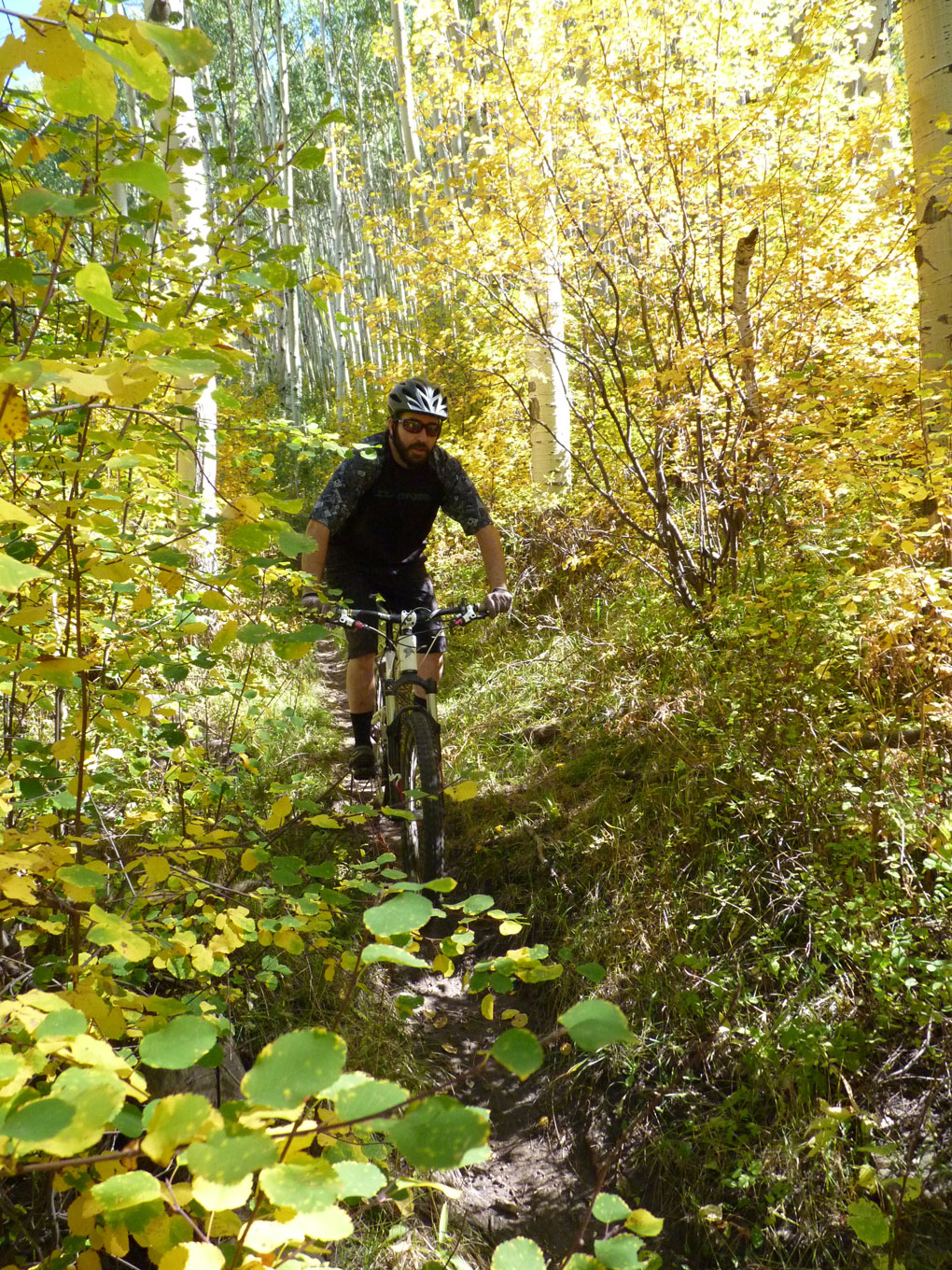In his review of the Santa Cruz Nomad, BLISTER reviewer Rob Dickinson mentioned that he experienced some troubling performance traits in the suspension, related largely to the DHX Air and Virtual Pivot Point suspension. I think it’s worth noting that that incarnation of the VPP on the Nomad is optimized to work with air shocks to make the bike more of an all-mountain destroyer. And while Push Industries makes an aftermarket upper link for the Nomad specifically for use with coil shocks that moves the needle back toward DH performance, the DHX Air unfortunately sits in the middle—not a predictably good air shock, but not a plush coil. I think if Rob had tried a different shock configuration, he may have been able to get the consistent shock stroke performance he was missing.
It would be a matter of choosing a standard volume air can shock for a lighter, firmer pedaling setup, or a Push Link with coil shock for a slight weight penalty but fantastic plush, linear suspension performance. I haven’t had any time riding the RockShox Vivid Air or Cane Creek Double Barrel Air, so I can’t speak to their performance, but I would imagine that with some time spent on setup they could be tuned well to the VPP. Both are immensely tuneable and a step above the DHX Air in the piggyback air shock category.
With the RP23 on my Nomad C, I also noticed a touch of the infamous “mid-stroke wallow” now and then. Though tuned for VPP2 and more progressive than the DHX Air, there was still some funkiness in the middle of the suspension range: I seemed to find the end of the shock stroke a little sooner and more often than I would prefer. I swapped the RP23 for a RockShox Monarch RT3 tuned for the VPP, and the bike was transformed yet again.
The best way I can explain it is that with the Monarch, the Nomad used the travel more efficiently: nice damp small-bump performance then ramping up earlier, offering predictable resistance in the mid- to end-stroke. I’ve been able to back off the HSC on the Lyrik as well, tweaking it as conditions warrant.
I’ve been on my RockShox-equipped Nomad for more a year now. Most notably, it climbs far better than I ever thought it would, a huge plus for long alpine suffer-festivals. Its descending capabilities leave little to be desired. It’s incredibly stable at high speeds, the wheels stay hooked up, and the bike maintains the rider’s chosen line. The rear wheel goes where you want it to go, a pleasant change from some of the “flexier” frames out there in the world. I have noticed that in extended, extremely rough sections of trail ridden at high speed, the rear suspension does seem to get a little overwhelmed, though I think this would be easily remedied with the use of a coil shock.
The durability of the carbon frame—though a bit of a psychological barrier initially—is now honestly the last thing on my mind. I’ve heard rocks clacking off the downtube that would have dented the heck out of an aluminum frame, and I have barely a paint chip. The stays have some healthy gouges, but I have no worries. I recently had the chance to visit the Santa Cruz Pit of Despair featured in the viral Pink Bike video and took some baseball swings with a Nomad mainframe against some concrete. Impacts that would have crumpled an aluminum frame did not create any detectable damage or failure. The frame just bounced back with a slight, dampened vibration feeling in my hands. Only after about 10 impacts to the same spot (the final three of which came from a 6’4″ linebacker-lookin’ fella) did we get the carbon to splinter a little. I’m a carbon believer, when done right. Santa Cruz is truly doing carbon right.
The devastating combination of that carbon and the proven Nomad chassis results in an efficient pedaling, 6.3-inch-travel bike with a strength-to-weight ratio that is off the charts—literally. Santa Cruz had to go get additional weights to get the bike finally to fail in testing.
I’ve run basically the same setup, at about 31 pounds with pedals, at everything from Buffalo Creek and Fruita to full-on bike park blasting during the Trestle Enduro, and never really felt like I was on “the wrong bike.” For an aggressive rider looking for a one-bike quiver, this may be the one.


sick bike sooo sick buy this 1 mil% if u ever see this bike burns urs and buy this so light so fast so good so nice the best enduro i ever owned.